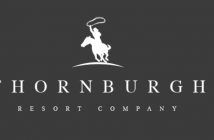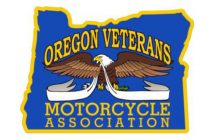Source: Unsplash
Protecting your product is the primary function of food packaging. But another purpose of packaging design is to attract customers. In other words, the packaging of your product should be enough to sell itself. To be able to reach your target market, you need to have a strong brand identity and it should reflect in the packaging design that communicates relevant information about your product.
In the food industry, the packaging of your product is the key to make higher sales and that is why it is important to know some key things before you come up with a design. Here are some tips to help you design great food packaging for your business.
Establish Your Brand Identity
More often than not, the packaging of a product is the consumer’s first point of contact with a brand. If the consumers see your product in a television commercial or in the grocery store, the packaging of your product is one of the first things they will consider when deciding whether or not they want to buy it. That is why it is important to make a clear statement about your company. The first step in developing your food package design is clarifying and building your brand identity.
You have to know exactly what your product is and why you want to offer it to the market. It is also essential to know its unique features from similar products that other companies are offering. You also have to know who your primary target market is and what your company’s goals and vision are.
Provide Your Product’s Necessary Information
Aside from the colors, shape, and size of the packaging, you also have to make sure that you provide all the necessary and practical information about your product. While it is important that the design will impact how your food product will pop on the shelf, it is much more essential that you provide the consumers with the ingredients, benefits, and cautions about your product.
Some of the necessary elements that should feature on your product packaging design include the brand, category or product type, variant, size, weight, content details, and its functional benefits. You may find it hard to include all these in your design, especially if your packaging is not big enough to contain all the details. But if your design will feature more of these elements, it’s more likely to perform better in the market. You should also be aware of the Food and Drug Administration’s Food Labeling Guides for any health claims you make about your product.
Prioritize the Packaging’s Form and Functionality
The product’s design and messaging should be balanced with its functional aspect. This means that you should ensure the food product’s safety and protection so that when you ship your product to the distributor or customer, they will arrive in good condition. Your product’s value will decrease if it arrives in the market damaged or not in the same condition as it was when it left the warehouse or factory.
Remember that your goal is not only to attract customers through creative packaging but also to prioritize maintaining its value and utility when it reaches the consumers. The features and benefits of your product should also appear in the food packaging in a way that can be easily read and understood by the customers. The packaging design will lose its purpose if the consumers cannot understand the content on its label.
Consider the Design’s Costs
Another important thing to consider in designing your food packaging is the material and design cost. As much as you are aiming for a successful new product launch, you should not forget that the costs of the packaging can quickly add up. Given this, you need to consider alternative options that can be functional, eye-catching, and cost-effective all at the same time.
The following are the cost drivers in designing food packaging:
Materials
Plastic, aluminum, glass, and paperboard are the traditional packaging materials used by a lot of manufacturers. However, you can also consider innovative and eco-friendly packaging materials like recycled cardboard and papers, recycled plastics, or organic fabrics. You can check out The Greener Package to get ideas on sustainable packaging materials that you can use for your food products.
Design
The development process of the packaging design can be really costly. But you can still cut on your expenses on the manufacturing stage of the process by looking for small startup firms that can get the job done while securing the best price possible. Of course, you still have to make sure that the quality of the design will meet your standards, so be diligent enough to interview designers and get samples of their work before you close a deal with them.
Printing, Production, and Labor
You can make trade-offs in labor and production costs. But make sure you understand the implications of trade-offs in the look of your package. You might have to compromise some of the quality or quantity of your packaging in return for paying less for it. But if you want to avoid trade-offs, you can consider buying your own machine. You can look for a can sealing machine at the best price for better packaging solutions that will enhance the efficiency of your product. It may cause significant upfront capital cost, but the labor costs will go down in the long run.
Ensure Ease of Storage and Distribution
The packaging also plays a vital role in ensuring the ease of storage and distribution of your product. It is important to remember that the shape and size of your packaging should not prevent you from easily shipping your products to the customers or distributors. Know the period of time needed for the product to be transported from the warehouse to the retailer and how you can cut it shorter. You also have to consider using a packaging method that will help extend the shelf life of your food product.
Conclusion
The design of your food package should be consistent with your brand identity. It will be a great selling point if your packaging communicates clearly what your brand message is through the use of your company name, logo, and design. But the choices you make about your food packaging design are just as important as the decisions you make about the product itself. You don’t have to rush the process. Make sure that you are designing food packaging that will not only protect your product but will also represent it and your brand message well.





